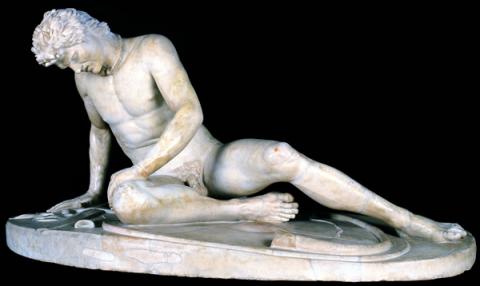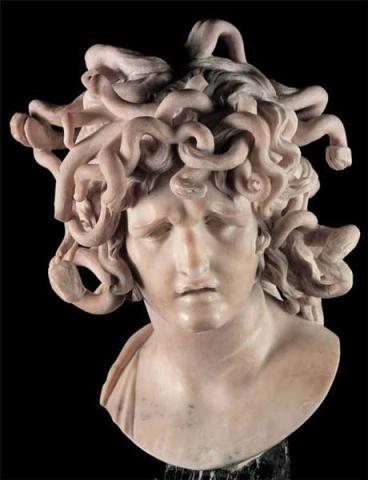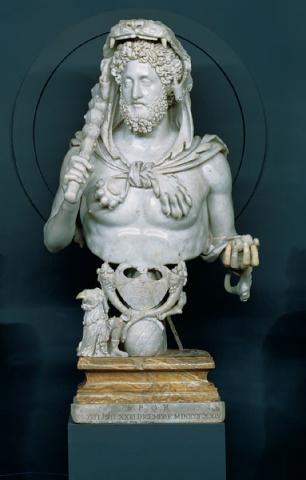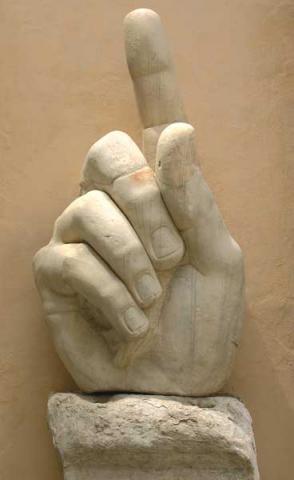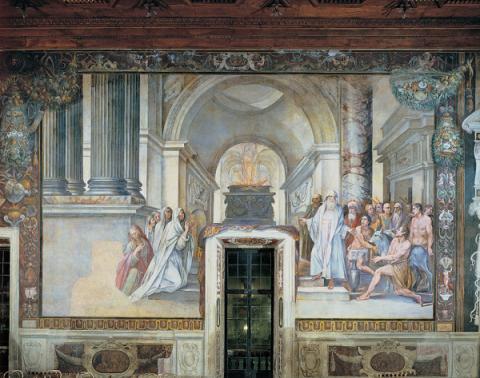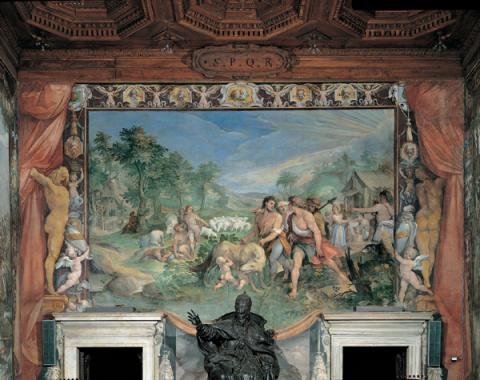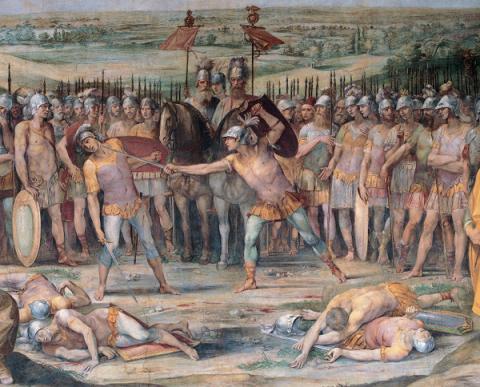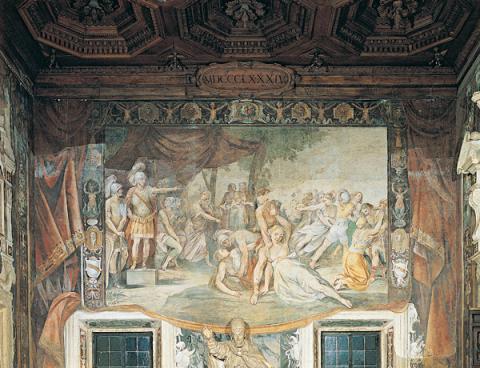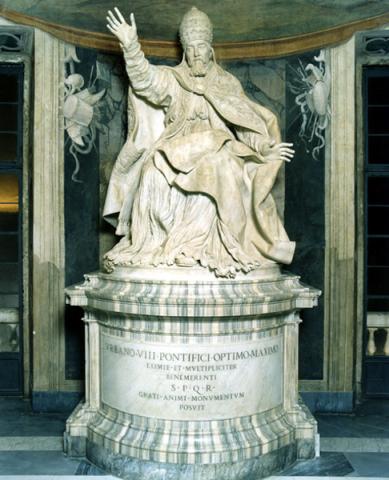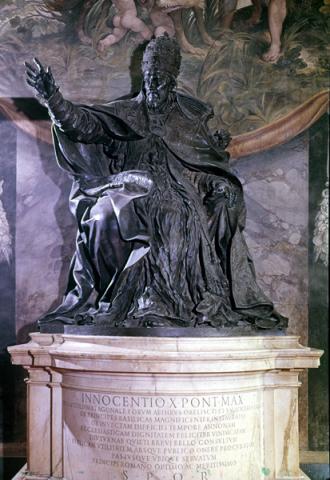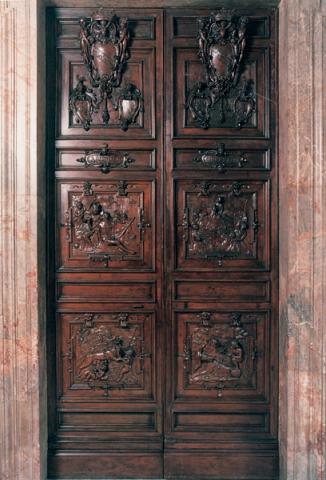Hall of the Horatii and Curiatii
The fresco decoration of this large room was carried out by Cavalier d'Arpino (Giuseppe Cesari) at the end XVI century and the beginning of the XVII century.
Originally conceived as tapestries to be hung along the walls, these frescoes portray historical episodes of Ancient Rome, which also inspire the monochrome medallions below.
Two monumental statues of popes face each other on the two smaller sides of the room: the one portraying Urban VIII is in marble and was carried out by Bernini and his pupils, while the bronze statue of Innocent X is the work of Algardi.
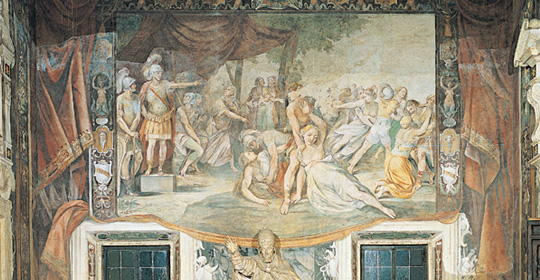
The Great hall, also known as the Horatii and Curatii Room for the subject of one of the frescoes, was used for the public hearings of the Council.
A prominent figure in Roman Mannerism, Giuseppe Cesari, also known as Cavalier d'Arpino (1568-1640), was appointed in 1595 to decorate the room.
The work was expected to be finished for the Jubilee of 1600, but in 1613 only the first three scenes were completed. After a break of more than twenty years the work was finished in 1640.
This cycle of frescoes illustrates some episodes of the history of Rome as told by Titus Livius. The scenes depict a series of fake tapestries, wrapped with painted festoons of fruit and flowers, lustral vases and trophies of arms. There is also a fake marble decoration by Cesare Rossetti that runs along the lower parts of the walls with monochrome medallions which depict historical events.
In order of execution, the cycle begins with:
Finding of the She-wolf with Romolus and Remus (1596): along the banks of the Tiber, under a fig tree, Faustulus discovers the she-wolf suckling Romulus and Remus. The representation of the she-wolf clearly alludes to the Capitoline Wolf, which is exhibited in the museum and is the symbol of the city.
Battle of Tullus Hostilius against the Veientes and the Fidenates (1597-1601): the fresco depicts a scene of the expansionist war fought by the Romans against neighbouring cities in the times of Tullus Hostilius, third king of Rome.
Battle between Horatii and Curiatii (1612-1613): an episode of the war Rome fought against the neighbouring city of Alba Longa, which resulted in the duel between the Romans, the Horatii brothers, and the Curatii brothers of Alba Longa. The contending armies witness the final scene of the duel, when the last of the Horatii is about to defeat the last of his opponents.
Rape of the Sabine Women (1635-1636): in the foreground, a group of Sabine women abducted by the Romans to populate their newly built city. The fresco was completed twenty years later and it shares a quicker and sketchier painting technique with the last two scenes, in the late manner of Cavalier d’Arpino.
Numa Pompilius Instituting the Cult of the Vestals (1636-1638): against an architectural backdrop, the Vestals keep the sacred fire that burns on the altar.
Romulus traces the boundaries of Rome (1638-1639): the legendary founding of Rome, Romulus marks out the boundaries of the city by tracing a furrow with a plow.
The carved and engraved wooden doors that illustrate the mythical founding of Rome were made in 1643 by Giovan Battista Olivieri and Giovanni Maria Giorgetti.
On the short side of the hall there are two honorary statues of Popes commissioned by the Conservators: the first, in marble, was sculpted by Gian Lorenzo Bernini between 1635 and 1640 and portrays Pope Urban VIII Barberini (1623-1644); the second statue, in bronze, was sculpted between 1645 and 1650 by the Alessandro Algardi, and it portrays Pope Innocent X Pamphilj (1644-1655).
Cavalier d'Arpino (Giuseppe Cesari 1568-1640)
Gian Lorenzo Bernini (1598-1680) ed aiuti


























